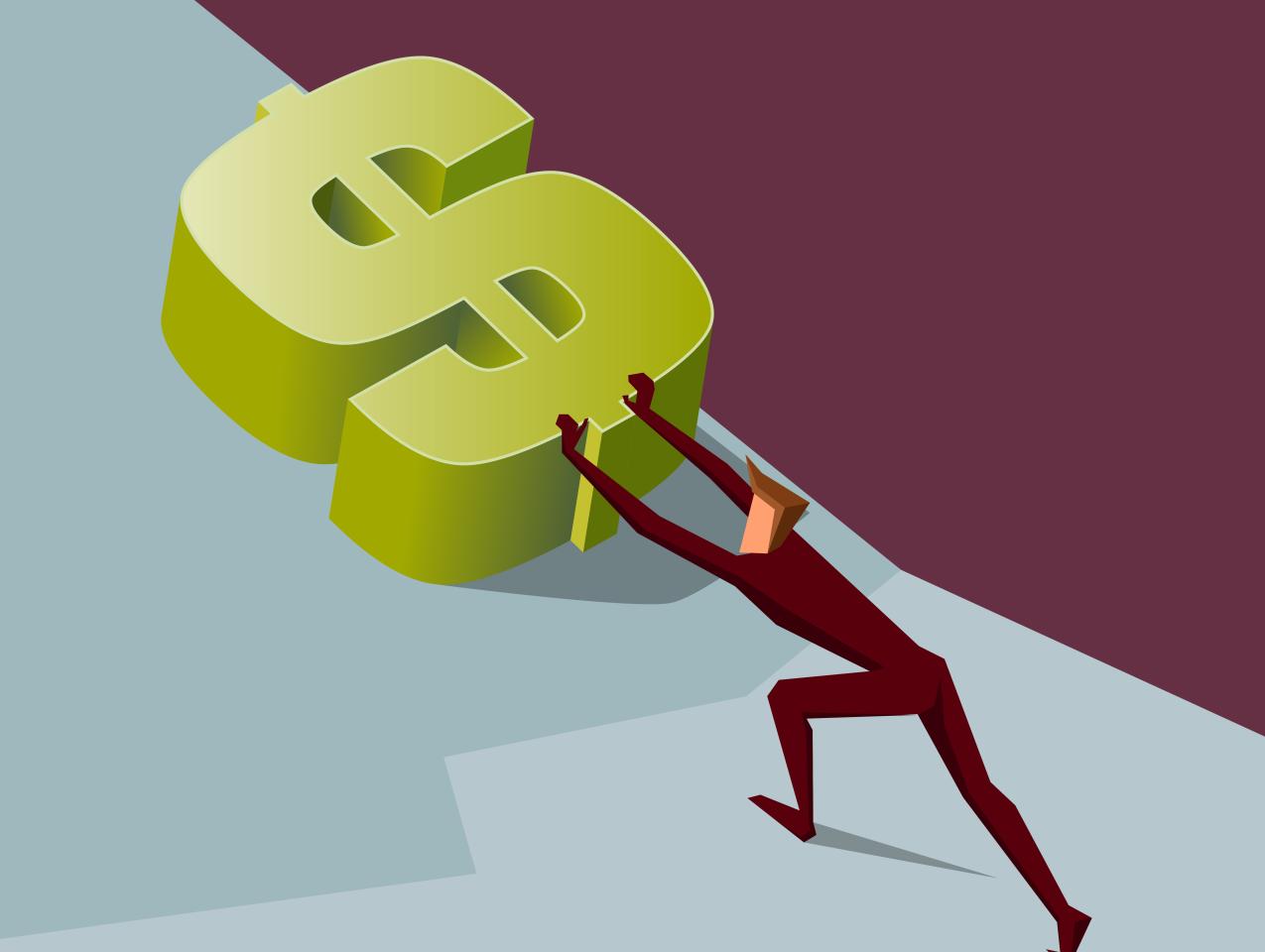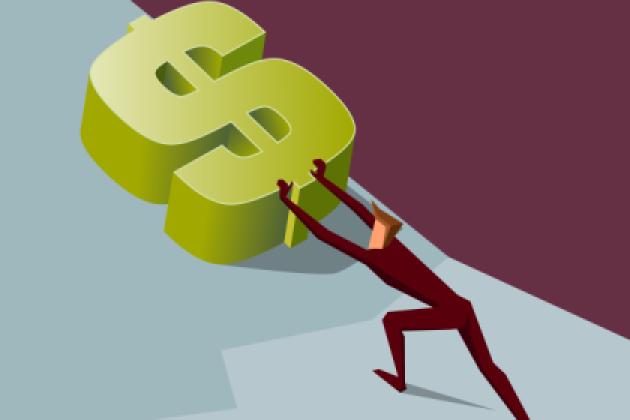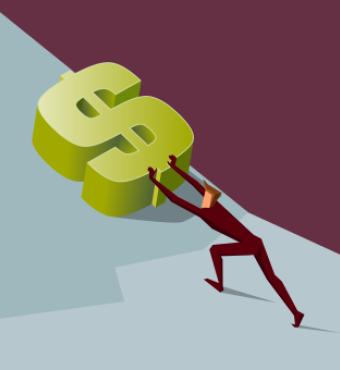In my previous article, I discussed the wonders of economic growth. I focused on the wonders for people in the United States and in other rich countries. But economic growth has been even more important for people in poor countries. In the last quarter century, it has pulled over one billion people out of extreme poverty and has created a large and vibrant middle class in formerly poor countries.
It’s important to understand the major causes of economic growth. Among them are innovation, free trade, and relatively free economies generally. And the key to economic growth creating long-term wealth is for it to continue so that we can take advantage of the miracle of compounding.
Economic Growth in Previously Poor Countries
The United Nations set an ambitious goal for reducing poverty worldwide between 1990 and 2015: cutting in half the percentage of people living in extreme poverty. At the time, the United Nations defined extreme poverty to be living on less than $1.25 a day. The $1.25 was later raised to $1.90 to compensate for inflation. That target was achieved, not in 2015, but in 2010. Since 1990, more than one billion people have been lifted out of extreme poverty.
Most of the reduction in poverty came in the two countries with the most people: China and India.
This dramatic reduction in world poverty had little or nothing to do with the United Nations but had everything to do with economic growth. And one of the biggest contributors was a move toward more international trade. More on that anon.
Many people worry about income inequality. I’m not one of those people as long as virtually everyone is becoming better off. But interestingly, growth in poor countries has caused worldwide income inequality to fall. The Gini coefficient, a measure of income inequality, can be as low as 0 or as high as 1. If it’s 0, there is total income equality. If it’s 1, one person has all the income in the world. In a 2015 study for the Peterson Institute for International Economics (PIIE), economists Tomas Hellebrandt and Paolo Mauro reported that between 2003 and 2013, the worldwide Gini coefficient actually fell, from 0.69 to 0.65.
Innovation
How do countries get richer? Partly by producing more of the same things with a given amount of labor and capital. But also partly by innovating: producing new goods that are improvements on the old.
Innovations can be major breakthroughs that revolutionize an industry or they can be small improvements that, added up, amount to large improvements in people’s standards of living.
Consider three examples of fairly large innovations: washing machines, chainsaws, and Zoom.
In a nine-minute video, Swedish statistician Hans Rosling, who died in 2017, shows just how dramatic the washing machine was to his family. It freed his mother to do other things and his grandmother found it so fascinating that she just sat and watched it perform its tasks. In one of my classes at the Naval Postgraduate School in the late 1990s, I was laying out the data on the entrance of women into the US labor force after World War II. A particularly curious student asked me why that had happened, and I pointed to washing machines, driers, automatic dishwashers, and a range of labor-saving devices that had freed up time mainly for married women. I also referenced a chapter of Robert Caro’s magnificent first book on Lyndon Johnson, The Path to Power. The chapter, titled “The Sad Irons,” told of the incredibly taxing work women in the Texas hill country did to wash laundry before they had electricity: hauling water uphill from a well, hauling wood to burn in a stove, firing up the stove in the middle of hot summers to heat water, and keeping it fired up to heat irons to press shirts. Washing machines were a huge boon to families, especially to women.
Another fairly major innovation, although less important than the washing machine, was the one-man chainsaw. Chainsaws had existed before those invented and produced by Robert P. McCulloch. But they were large and needed to be carried around by two men. McCulloch, who had worked for years with small engines, invented the first one-man chainsaw. Because its shell was made of aluminum, the saw weighed only twenty-five pounds, which is why one man or woman could use it. McCulloch sold over 100,000 of these chainsaws and competitors came along and sold many more. A friend of mine who was age seventeen when the chainsaw came along and whom his father tasked to cut wood to heat their large house in the winter, told me that the chainsaw freed up large parts of his summer.
An example of a more recent major breakthrough is Zoom. Zoom has made it so much easier for large groups to communicate remotely. Last fall, I gave a speech in Washington in which I asked the audience of about fifty to raise their hands if they used Zoom a fair amount. Virtually every hand shot into the air. I then asked them to raise their hands if they valued it a lot. Almost every hand stayed in the air.
Those three things—washing machines, chainsaws, and Zoom—have made us all more productive. Think particularly about Zoom since it’s so recent. How would we have fared during lockdowns that lasted months in many states and over a year in some states? Not well. I should note, though, that if we hadn’t had Zoom or other competing computer applications, it’s possible that what Stanford economist and epidemiologist Jay Bhattacharya calls “the laptop class” would not have been so indifferent to the plight during lockdowns of waiters and others whose jobs were destroyed.
Each of those innovations added substantially to economic growth. So did small innovations. In a 2016 article titled “The Prosperity Pool,” economist Donald J. Boudreaux of George Mason University points out that thousands of little innovations, none of which contributes much to economic well-being, add greatly in total to prosperity. Three examples he gives are two-ply paper towels, pull-tab soup cans, and shampoo in plastic bottles. Two-ply paper towels are more absorbent than one-ply; pull-tab soup cans eliminate the need for a can opener; and plastic bottles for shampoo mean that when you’re in the shower and the bottle drops, it’s not like the old days (when, by the way, I was a young adult) when you could have cut your feet on the shattered glass.
Consumer Surplus
While I generally refrain from using economics jargon in articles I write for the general public, there’s one powerful concept from economics that is important to use here: consumer surplus. Consumer surplus is the maximum amount consumers would be willing to pay for a good or service minus the amount they actually do pay.
Why is the term so important in this context? It’s because when statisticians in the federal government measure the contribution of goods and services to gross domestic product, they measure the value of those goods and services at market prices. But the market price measures only the value to the person who was virtually indifferent about whether to buy the product. It misses the consumer surplus of the vast majority of consumers, some of whom would have been willing to pay a little more for the product and some of whom would have paid much more.
Think back to the woman in the hill country of Texas in the 1930s before she had a washing machine. Even though she was of very modest means, if she saved six hours in a day and a lot of work in a hot kitchen every Monday, she would likely have been willing to pay much more for the washing machine and the electricity than she was charged. Or consider the person using Zoom. Doing so often saves airfares, rental charges on hotel rooms, and many hours of travel. Zoom, of course, is not a perfect substitute for in-person, but for many uses it is pretty close.
What this means is that our data on gross domestic product dramatically understate GDP and, therefore, understate economic growth, especially in times of substantial innovation.
The concept of consumer surplus also helps us understand who gains the most from innovation. When we look at billionaires like Bill Gates, the late Steve Jobs, and Eric Yuan, the man who developed Zoom, we might be tempted to think that the innovators get most of the gains. But we forget that for every billion they earn, hundreds of millions of us get at least hundreds of dollars of value annually out of just a few innovations.
We don’t have to settle for speculating about who gains the most, because William D. Nordhaus, an economist at Yale University, co-winner of the Nobel Prize in economics in 2018, has given us the answer. Although the Nobel Committee didn’t even mention his work on the issue, Nordhaus, in a 2004 study published by the National Bureau of Economic Research, found that “only a minuscule fraction of the social returns from technological advances over the 1948–2001 period was captured by producers, indicating that most of the benefits of technological change are passed on to consumers rather than captured by producers.” How minuscule? 2.2 percent. Which means that 97.8 percent of the gains went to consumers.
Economic Freedom: The Most Important Ingredient
While no country has ever had complete economic freedom, a good dose of economic freedom is required for economic growth and economic well-being.
The best way to see this is to compare countries that are alike in many ways—culture, language, natural resources, etc.—but that have starkly different degrees of economic freedom. In 2008, I did two such comparisons in “The Two Koreas and the Two Germanies: Close to a Laboratory Experiment.” The bottom line is that between 1953 and 2004, South Korea, with a much freer economy than that of communist North Korea, had an 8.6 percent average annual growth rate of GDP, more than three times that of North Korea. Between 1950 and 1991, West Germany, with a relatively free economy, had a 4.4 percent annual average growth rate, which was over three times that of communist East Germany, whose annual growth rate averaged 1.4 percent.
What has been particularly important for poorer countries since World War II has been a substantial reduction in trade barriers. Moving toward freer trade causes people to produce the items in which they have a comparative advantage and buy other items from lower-cost producers in other countries. In “Does Trade Reform Promote Economic Growth? A Review of Recent Evidence,” a 2019 PIIE study, Dartmouth economist Douglas A. Irwin, arguably the leading trade economist in the United States, shows that between 1983 and 2009, developing countries dropped their average tariff rate from over 35 percent to about 10 percent. He reports on a range of studies whose answer to the question in the title is “yes.” In a table in the article, Irwin cites studies that find anywhere from a 1 percentage point increase in annual growth up to a whopping 2.7 percentage point increase in annual growth due to reductions in trade barriers. Either of those annual increases, over a decade, leads to a major increase in economic well-being.
Which brings us to the mathematics of economic growth.
The Mathematics of Economic Growth
An apocryphal story has it that famous physicist Albert Einstein, when asked what the most powerful force in nature is, answered “compound interest.” The idea is that when you invest and earn interest, the interest you earn in one year itself earns interest. The result over many decades is that a small amount can, at say a 3 or 4 percent interest rate, turn into a large amount.
Because the principle of compounding is a mathematical principle, it applies to any growth rate, including the growth of the economy. A 3 percent growth rate in one year on top of an economy that grew by 3 percent in the previous year, doesn’t lead to a 6 percent bigger economy. It leads to a 6.09 percent bigger economy. The effect is larger the longer that the growth rate persists.
Imagine that a move to a freer economy increases a country’s annual growth rate from 2 percent to 3 percent. Over twenty years, the real GDP of the 2 percent growth economy would have been 49 percent larger. But the 3 percent growth economy would be 81 percent larger. Thus the importance of raising the long-term growth rate.
Conclusion
Economic growth matters for everyone. It has made people in the United States and other rich countries better off. And it has pulled more than one billion people out of extreme poverty. We also have a pretty good idea of what institutions are required for economic growth. One key factor is free trade. Another, as the comparisons of North and South Korea and East and West Germany show, is a relatively high dose of economic freedom.
















